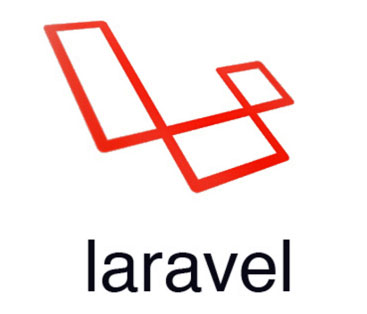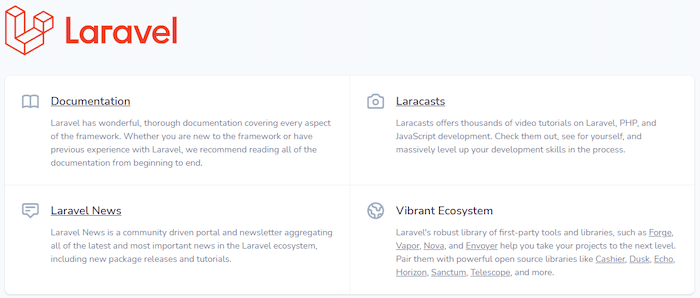How To Install Laravel on Linux Mint 20

In this tutorial, we will show you how to install Laravel on Linux Mint 20. For those of you who didn’t know, Laravel is a very popular open-source PHP framework aimed at the easy development of applications. It is based on the Symfony framework and follows the model–view–controller (MVC) architectural pattern.
This article assumes you have at least basic knowledge of Linux, know how to use the shell, and most importantly, you host your site on your own VPS. The installation is quite simple and assumes you are running in the root account, if not you may need to add ‘sudo‘ to the commands to get root privileges. I will show you the step-by-step installation of Laravel on a Linux Mint 20 (Ulyana).
Prerequisites
- A server running one of the following operating systems: Linux Mint 20.
- It’s recommended that you use a fresh OS install to prevent any potential issues.
- SSH access to the server (or just open Terminal if you’re on a desktop).
- An active internet connection.
- A
non-root sudo useror access to theroot user. We recommend acting as anon-root sudo user, however, as you can harm your system if you’re not careful when acting as the root.
Install Laravel on Linux Mint 20 Ulyana
Step 1. Before running the tutorial below, it’s important to make sure your system is up to date by running the following apt commands in the terminal:
sudo apt update sudo apt install software-properties-common
Step 2. Installing the LAMP stack.
A Linux Mint 20 LAMP server is required. If you do not have LAMP installed, you can follow our guide here.
Step 3. Installing Composer.
We are downloading and installing the Composer with the following commands:
curl -sS https://getcomposer.org/installer | php sudo mv composer.phar /usr/local/bin/composer sudo chmod +x /usr/local/bin/composer
Step 4. Installing Laravel on Linux Mint 20.
By default, Laravel is not available on the Linux Mint base repository. Now we clone the master branch Laravel from the GitHub repository:
cd /var/www git clone https://github.com/laravel/laravel.git
Next, navigate to the Laravel code directory and use composer to install all dependencies required for the Laravel framework:
cd /var/www/laravel sudo composer install
Then, set proper permissions on files:
chown -R www-data.www-data /var/www/laravel chmod -R 755 /var/www/laravel chmod -R 777 /var/www/laravel/storage
Step 5. Create Environment Settings.
Now create the Laravel environment configuration file:
mv .env.example .env
Next, create the key file with the PHP artisan command:
root@idroot.us:# php artisan key:generate
Application key [base64:EFk4kXxbmwe46+q/oF7hPnHm6mtechnsmfOMWd/qg=] set successfully.
After that, edit the .env configuration file and update the required settings. Also, make sure APP_KEY is properly set as generated in the above command:
nano .env
Edit the following file:
APP_NAME=Laravel APP_ENV=local APP_KEY=base64:EFk4kXxbmwe46+q/oF7hPnHm6mtechnsmfOMWd/qg= APP_DEBUG=true APP_URL=http://localhost ...
Step 6. Configuring MariaDB.
By default, MariaDB is not hardened. You can secure MariaDB using the mysql_secure_installation script. you should read below each step carefully which will set a root password, remove anonymous users, disallow remote root login, and remove the test database and access to secure MariaDB:
mysql_secure_installation
Configure it like this:
- Set root password? [Y/n] y - Remove anonymous users? [Y/n] y - Disallow root login remotely? [Y/n] y - Remove test database and access to it? [Y/n] y - Reload privilege tables now? [Y/n] y
Next, we will need to log in to the MariaDB console and create a database for Laravel. Run the following command:
mysql -u root -p
This will prompt you for a password, so enter your MariaDB root password and hit Enter. Once you are logged in to your database server you need to create a database for Laravel installation:
CREATE DATABASE laraveldb; CREATE USER 'laraveluser'@'localhost' IDENTIFIED BY 'Your-Strong-Passwd'; GRANT ALL PRIVILEGES ON `laraveldb`.* TO 'laraveluser'@'localhost'; FLUSH PRIVILEGES; EXIT;
Next, edit the .env file and update database settings:
nano .env
Add the following file:
DB_CONNECTION=mysql DB_HOST=127.0.0.1 DB_PORT=3306 DB_DATABASE=laraveldb DB_USERNAME=laraveluser DB_PASSWORD=Your-Strong-Passwd
Step 6. Configure Apache.
Now create an Apache virtual host configuration file for Laravel:
nano /etc/apache2/sites-available/laravel.conf
Add the following lines:
<VirtualHost *:80>
ServerAdmin admin@your-domain.com
DocumentRoot /var/www/laravel/public
<Directory />
Options FollowSymLinks
AllowOverride None
</Directory>
<Directory /var/www/laravel>
AllowOverride All
</Directory>
ErrorLog ${APACHE_LOG_DIR}/error.log
CustomLog ${APACHE_LOG_DIR}/access.log combined
</VirtualHost>
Save and close the file then enable the Apache virtual host and rewrite the module with the following command:
sudo a2enmod rewrite sudo a2ensite laravel.conf sudo systemctl restart apache2
Step 8. Accessing Laravel Framework Web Interface
Once successfully installed, you can access your website on http://laravel.your-domain.com. A congratulations page as follows should greet you:

Congratulations! You have successfully installed Laravel. Thanks for using this tutorial to install the latest version of the Laravel PHP framework on the Linux Mint system. For additional help or useful information, we recommend you check the official Laravel website.